Quackgrass
Quackgrass is difficult to control. The long running rhizomes can weigh up to 6.7-9 tonnes per hectare (3-4 tons per acre). The seeds are a serious contaminant in cultivated forage seed.
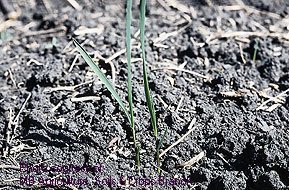 click to enlarge |
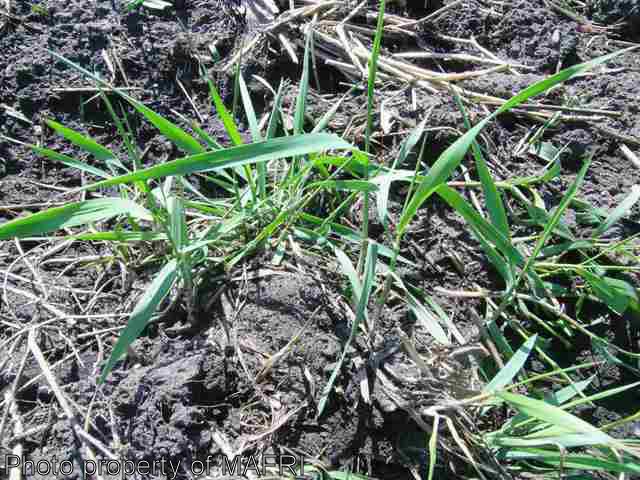 |
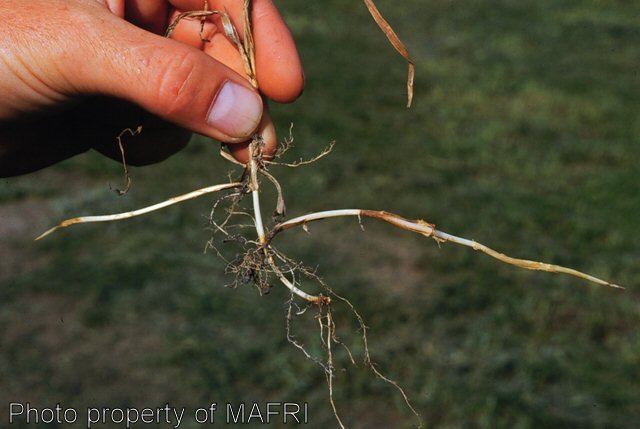 |
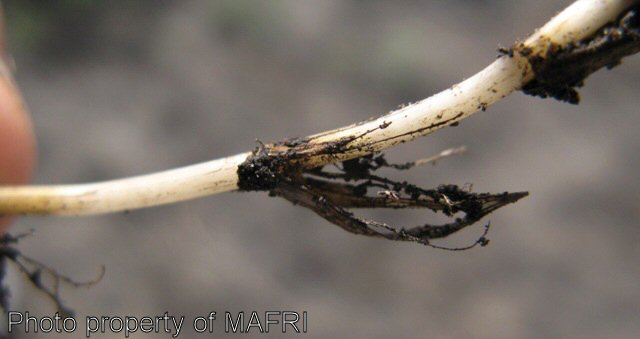 |
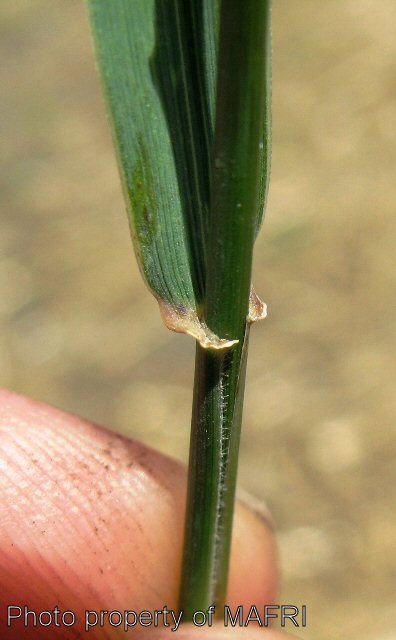 |
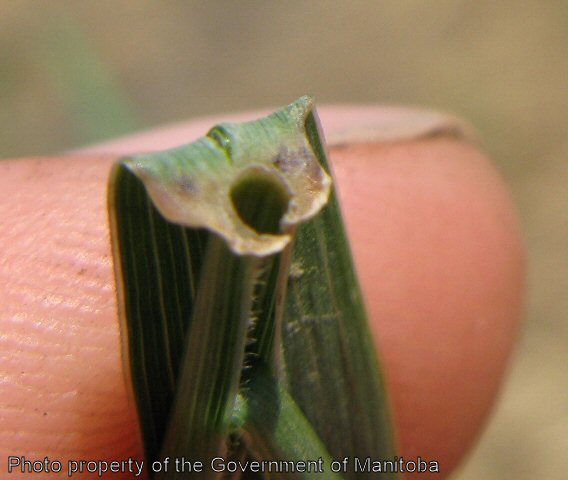 |
 |
Biology
This perennial grass spreads by seed and underground rhizomes. The stems are smooth and 35-140 cm (1-4.5 ft.) high. The leaves are flat and slightly hairy on the upper surface. There are clasping auricles at the base of the leaf blade. The spikelets have 3-7 florets, attached broadside to the flowering stem. There are 2 horizontal rows on each spike.
The seeds are yellow or white and can remain in the soil for more than one year before germinating. However, quackgrass propagates and spreads mainly by rhizome formation. These rhizomes also secrete a toxic substance that suppresses the growth of surrounding plants and enhances the competitiveness of quackgrass (known as an allelopathic effect). Quackgrass thrives under cool, moist conditions.
Scouting Techniques
Inspect fields frequently to locate infestations early. Take a minimum of 20 weed counts across the field. Quackgrass usually occurs at high densities in localized patches within a field but can spread rapidly by its underground rhizomes. Look carefully for patches that are beginning to encroach into the field from field borders or headlands.
Effects On Crop Quality
Quackgrass can cause reductions in seed filling and the weed seeds can be a contaminant in forage seed. The rhizomes often get tangled in harvesting equipment (e.g., in potatoes).
Threshold/Yield Loss
When present in dense patches (more than 900 shoots per square metre or sq. yd.), quackgrass can reduce wheat yields by up to 100%. For example, 500 shoots per square metre (sq. yd.) cause about a 50% loss in yield. As a rule of thumb, for every 100 shoots per square metre (sq. yd.), the wheat yield will drop by about 10%. The economic threshold in canola is about 20-25 shoots per square metre (sq. yd.).
Control Tips
A multi-year integrated control plan must be used for control of quackgrass. This could include tillage, patch mowing, in-crop herbicides, and pre-harvest and post-harvest herbicides. Proper crop rotation is essential. As with some of the other weeds, the keys to control are recognizing the problem and being persistent.
Tillage may decrease quackgrass density or may spread the rhizomes increasing spread of the weed. Quackgrass patches should be tilled into the center of the patch to limit the spread of the rhizomes. In the spring, repeat tillage whenever the top-growth approaches 5 cm (2 in.). Remove rhizomes from tillage and seeding equipment before leaving quackgrass infested fields.
Herbicides are available in broadleaf crops for suppressing quackgrass. Glyphosate applied pre-seeding or post-harvest will control quackgrass, but pre- harvest applications are the most effective.
